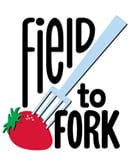
National news of a prominent football player suffering from a heart condition has brought to light the need for heart disease education and information. What do you do to protect your heart?
February is designated as American Heart Month. As a leading cause of death in the U.S., it is important to make your heart a priority. Many steps in self-care can greatly improve your heart health. Learning CPR can save a life.
Here are seven self-care steps you can take to heart health.
- Start with a self-care checklist for the week. Choose from these ideas to get started.
- Check your blood pressure and know what the numbers mean for you.
- Make healthy eating goals and simple changes to your diet for big benefits. You too can eat a heart-healthy diet!
- What is your wellness routine? Part of that is getting quality sleep and reducing stress.
- Treat yourself! You deserve some fun to break up your normal responsibilities.
- Who inspires you? Those “feel good” people can improve your heart too!
- What is your favorite way to take care of your heart? Get outside and take a walk to benefit your heart and mind.
Learn more at the National Heart, Lung, and Blood Institute website.


 January prompts many to resolutions to improve their goals. The most popular resolutions are eating less sugar, losing weight, and improving diet healthfulness. Here’s some SMART tips from the
January prompts many to resolutions to improve their goals. The most popular resolutions are eating less sugar, losing weight, and improving diet healthfulness. Here’s some SMART tips from the 

